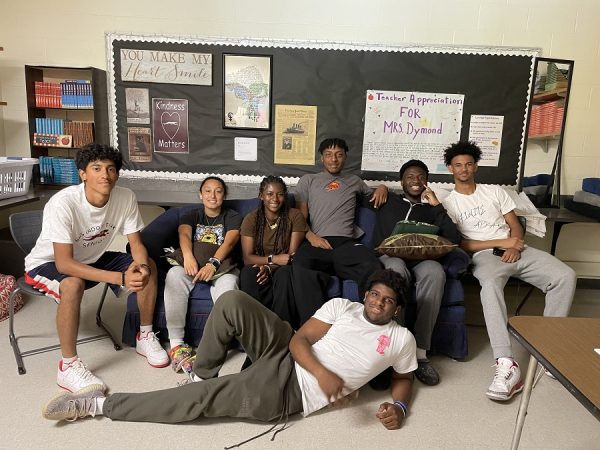Celebrating Black History Month: Dorothy Dandridge
In honor of Black History Month let’s start by giving attention to some forgotten black faces starting with the beauty that was Dorothy Dandridge. Dorothy Jean Dandridge (1922 – 1965, age 42) was a black American film and theatre actress, dancer, singer and one of Hollywood’s many sex symbols.
Dandridge grew up in a family of performers. Her mother – Ruth Dandridge – was an actress and entered Dorothy and Dorothy’s older sister Vivian into the entertainment industry at a young age as The Wonder Children.
The Wonder Children would tour the U.S during the Great Depression singing in black churches almost nonstop for 5 years until the stock market crashed leaving them jobless.
Dandridge moved to Los Angeles, California where Dorothy and Vivian made a friend named Etta Jones who soon turned their duo into a trio and the group was renamed to the “Dandridge Sisters”. For a short while the trio travelled the U.S performing in nightclubs such as the Cotton Club, theatres, radio shows, a few films as singing acts and even went on tour in Europe.
However, after some time Dorothy decided to leave the group in pursuit of her solo career.
Thanks to Dorothy’s early introduction into show business, she also got an early introduction to racism and segregation. Due to the color of her skin, she was said to be below white counterparts whether she was much more talented or not. She wasn’t allowed to eat in certain areas, use certain facilities as well as experiencing the infamous incident of being told not to swim in a casino hotel’s pool or it would have to be drained if a “negro has been in it”.
Being the defiant person she is, she put on a bathing suit, stuck her toe into the pool and the pool did get drained. Note that this was the same hotel that hired her to perform, yet she couldn’t even swim.
Nevertheless, this wouldn’t dwindle Dorothy’s fire. Dorothy had two marriages in total. Both witch never lasted as well as a daughter with her first husband Harold Nicolas.
- “If I were white, I could capture the world.”
Dorothy’s first recognized role was as Helen Fielding in the crime movie Four Shall Die (1940) and her first starring film role in Bright Road (1953). Because of her rejection of stereotypical black roles and roles that weren’t leading roles, she didn’t have many opportunities due to her race.
Dorothy once turned down a role in The King and I (1956) because she refused to be a slave. However, Hollywood not only recognized her talents but her looks as well. This led Dorothy to be promoted with a sultry sexy persona becoming America’s first black sex symbol.
Dorothy had many black friendly friends and supporters including James Dean, Dezi Arnez, Ava Gardner, Marlon Brando (who was said to have a crush on her after kissing Dorothy at an award ceremony) and Marylin Monroe who was a very close friend of hers though no biography mentions the friendship due to it being uncommon and taboo to be while and have a black friend. Dorothy was often called the “Black Marylin Monroe” due to their many similarities.
It is rumored that Dorothy Dandridge was the one that inspired Marylin’s sexy persona. She was said to be inspired by Lena Horne, a singer, dancer, actress and civil rights activist.
Dandridge has a long list of firsts such as being the first black actress to present an Oscar, first black woman featured on the cover of Life magazine and Hollywood’s first interracial kiss. She also went on to be the first black woman to be nominated for an Academy Award for best actress thanks to the lead role as Carmen Jones in Carmen Jones (1954) and a Golden Globe for her performance as Bess in Porgy and Bess (1935). Halle Berry who performed and won an Emmy as Dorothy Dandridge in Introducing Dorothy Dandridge dedicated the award to the late actress. Her life was cut short sadly by an alleged suicide on pills or accidental OD. Even at her death the similarities of her and Marilyn’s tragic lives and how they came to an end.
Dorothy paved the way for many black actresses today. She became a household name in the 1950’s and hardly needed any introduction. Janet Jackson describes her as an “icon” and “a powerful inspiration” to her. Unfortunately, unlike her white counterparts, her legacy hasn’t survived the way it should have and Dorothy Dandridge is now forgotten by today’s generation.
- “I can’t play a slave.”
The “Black Marilyn Monroe”
To those of her that know her in the black community, Dorothy was an icon, a trendsetter, and an inspiration. She has the title of being the “black Marilyn Monroe” however she was’t. She was just herself.
Unlike Marilyn Monroe who could eat and swim wherever she wanted, Dorothy had talents that were her own, struggles that were her own and had to struggle to break boundaries put onto her to make a name for herself. No matter how talented she was, she would always be criticised and treated like she wasn’t enough. Though they had similar fame, Dorothy wasn’t able to show her true potential as an actress or a singer which despite her popularity limited her career and influence. Unlike Marilyn, her legacy wasn’t preserved.
Young black girls and women don’t know about her because no one is talking about her. In a world where people on television and media all mostly look the same it’s important as a person to have someone that looks like you and comes from where you come from and know that you don’t have to look a certain way to achieve greatness. White media is constantly being pushed to this day.
Dorothy Dandridge was the kind of woman that black Americans needed to represent them and if Dorothy’s legacy got pushed just as hard as Marilyn’s many black girls wouldn’t grow up with a deep rooted self hatred for themselves and wishing to be white. Dorothy Dandridge has opened doors for the black community and deserves to be celebrated.








